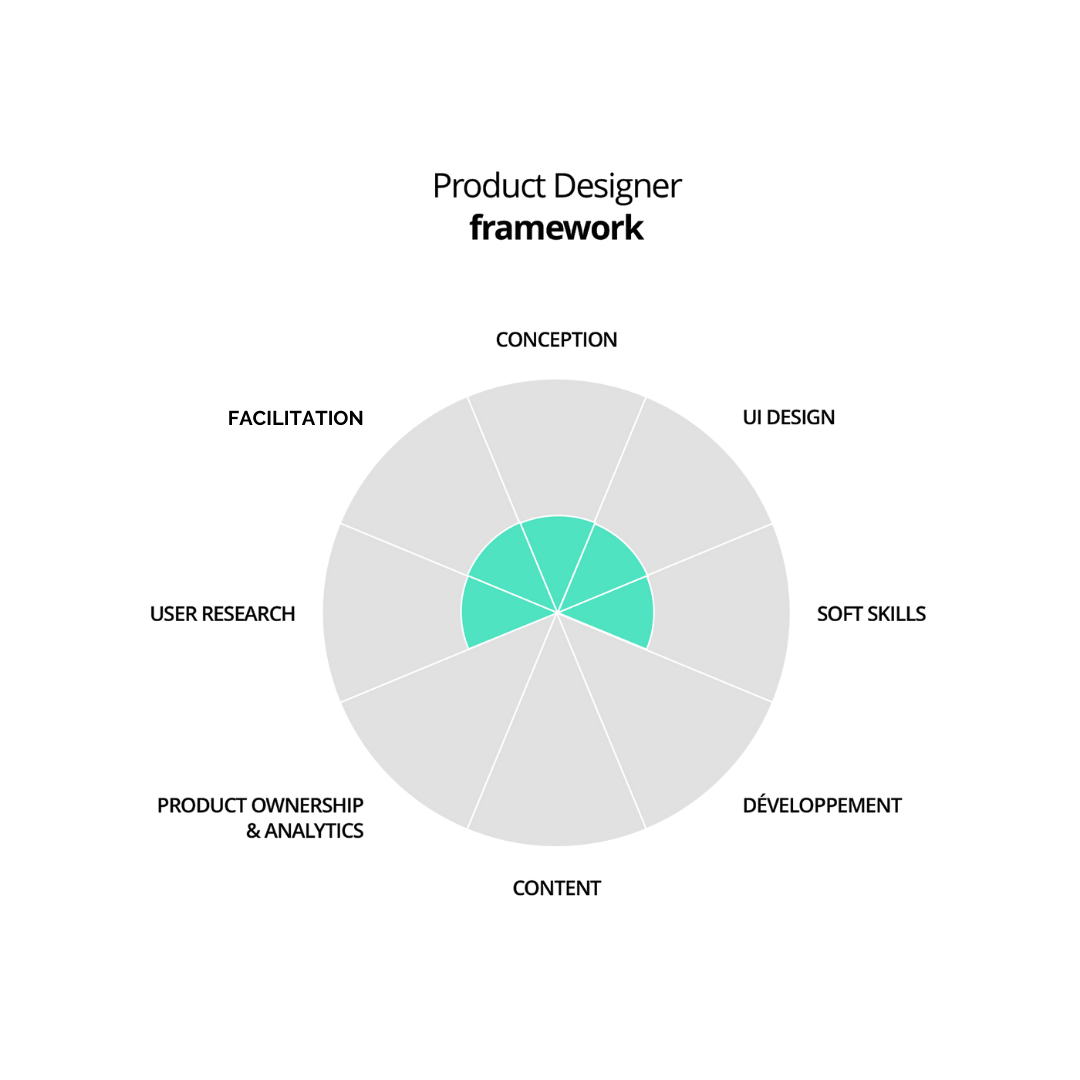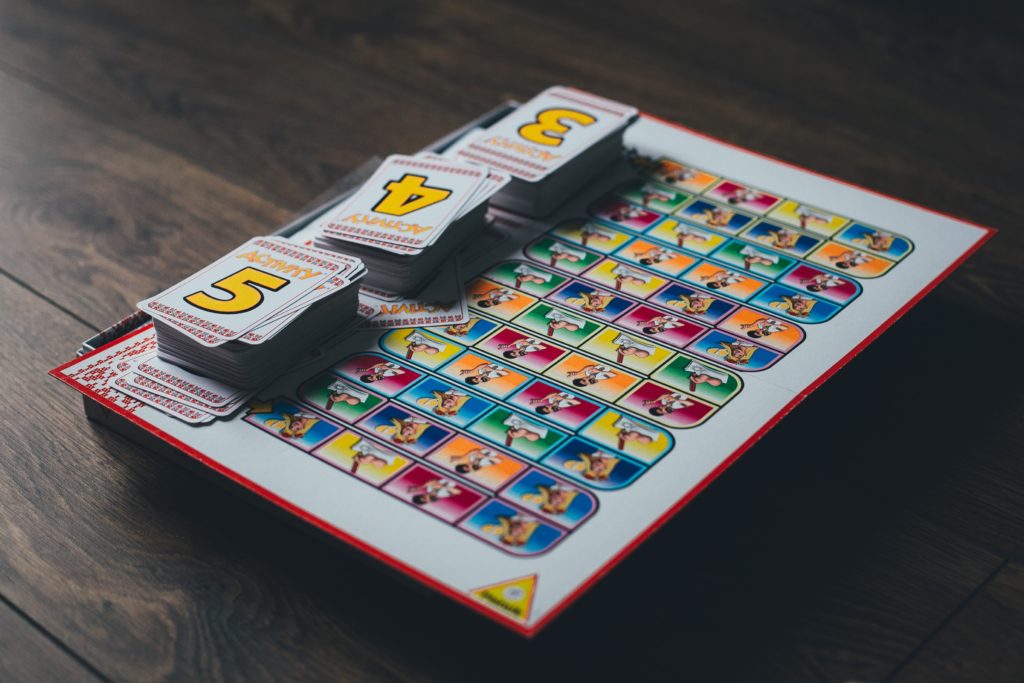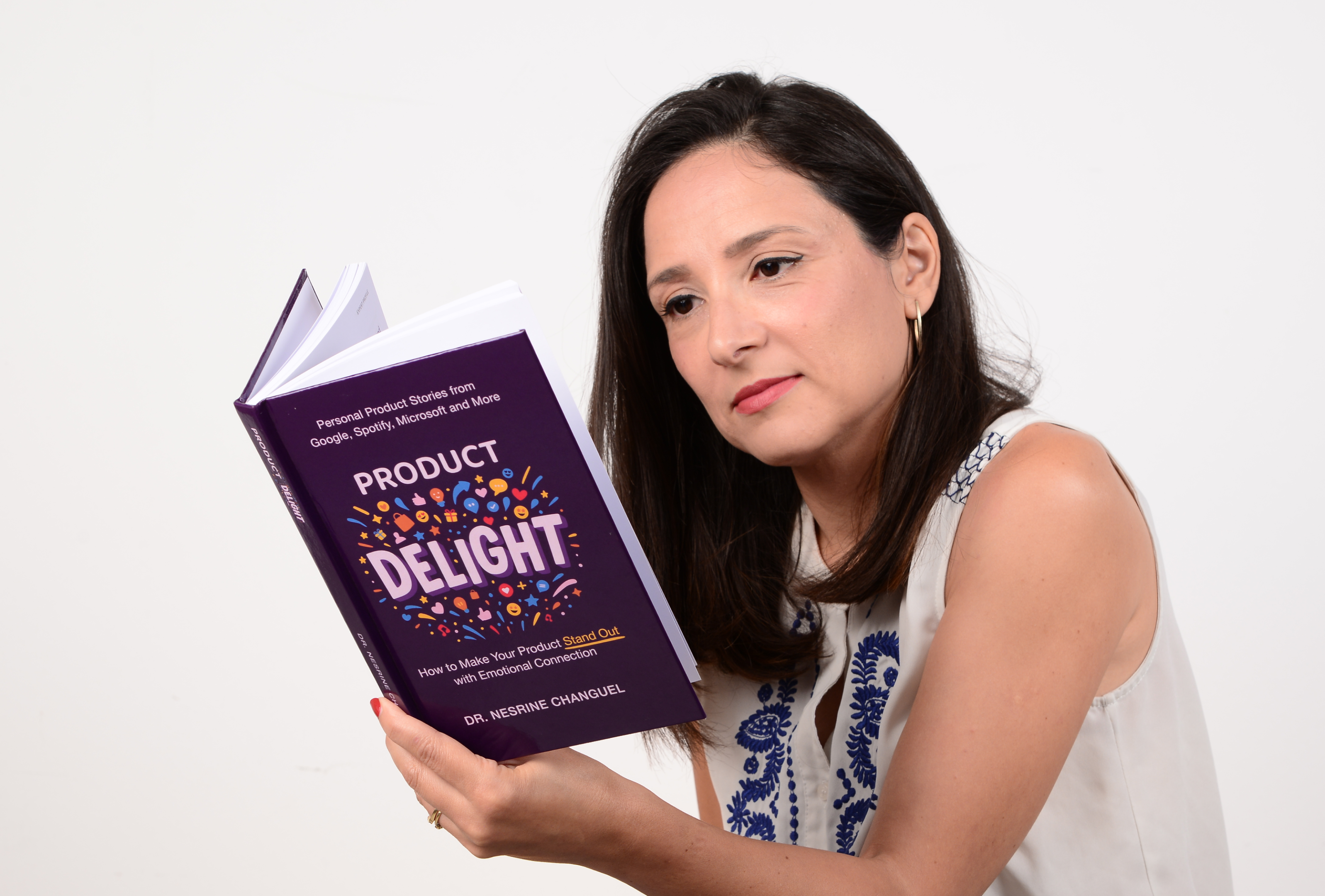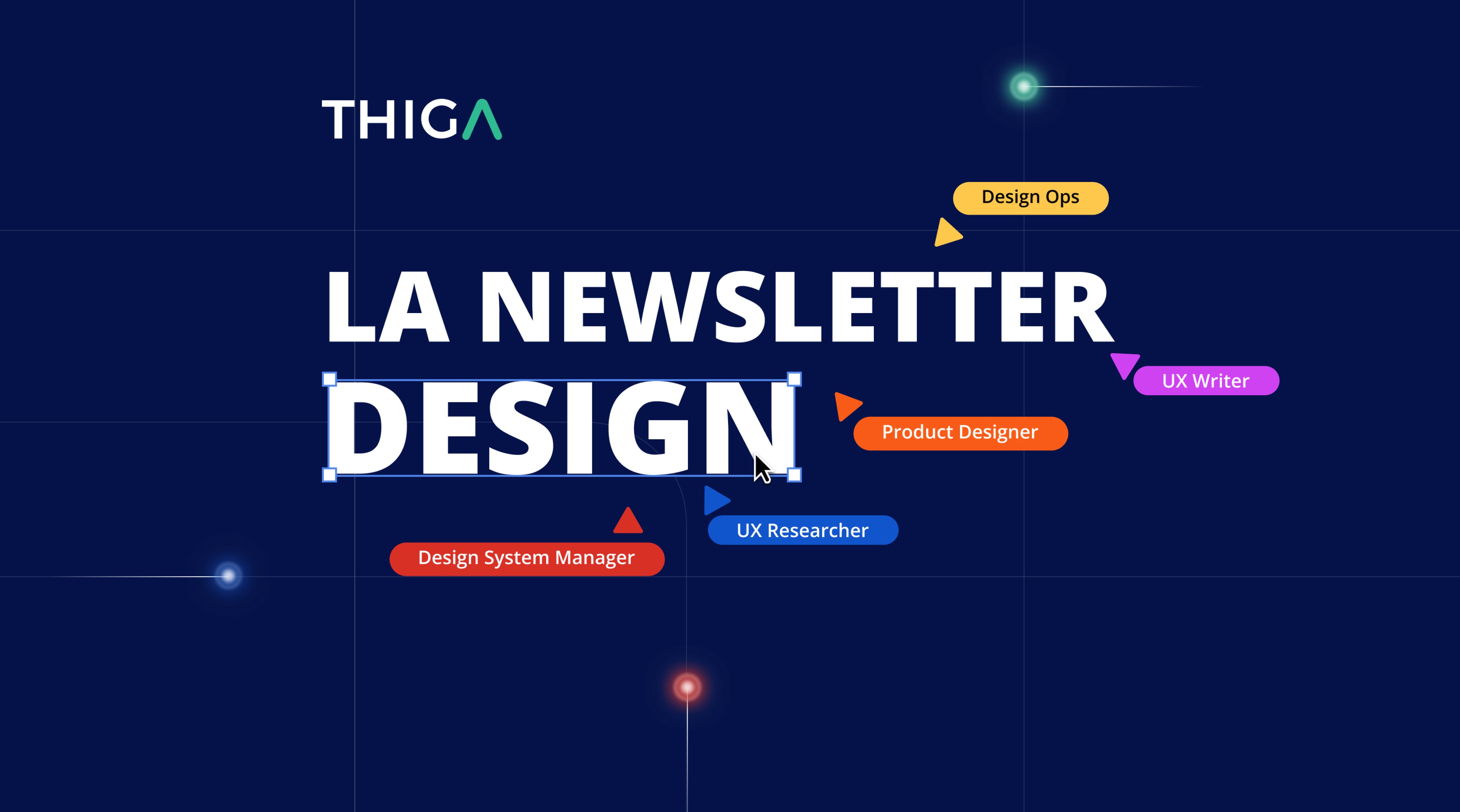A role which is a discipline in its own right, separate from Design, the Product Designer is a fairly new profession with its own set of skills.
At Thiga, we consider that the essence of a Product Designer is to have a spectrum of skills large enough to build a product by combining the entire user experience, but also the commercials related to it.
With this in mind, we have created a full-stack skills model that encompasses eight distinct skill families.

Within this scope of competences, five of them seem to us fundamental:
- User Research
- Facilitation
- Conception
- UI Design
- and Soft Skills
This base is essential to the Product Designer to carry out their work. Indeed, a designer specialising in user research that would not touch other skill categories may be a very useful profile in a product-wide team. Nevertheless, according to our model, they can not be considered a "Product Designer".
To the five category core, we add three others that seem very useful but not essential to the Product Designer:
- UX Writing
- Product Ownership,
- Software Development
Beyond these hard skills, the Product Designer has a particular state of mind, they master the product culture and evolves with ease in a product team. This is what sets it apart from a traditional designer.
This full-stack model is not meant to be monolithic! People in the Product Designer business today have varied professional backgrounds and academic backgrounds.
Finally, we can not talk about the role and skills of the Product Designer, not to mention its responsibility. Because if the designer has the power to make the use of a product without a hitch, they take the risk of making their user ... addicted, precisely. Designer a good product, so do not be content to design commitment, but predict the externalities of its design. What are the psychological or motivational levers operated by the interface? What could be the deleterious effects on the user or their entourage? These are just the few questions that a Product Designer must ask themselves to prevent the myopia of the product team.
The Game of Five Product Designer Key Competencies

1.1. User Research:
the "Know Yourself" Product Designer
The Product Designer makes informed decisions, based on qualitative and quantitative data. They must be observant and know the techniques of observations, interviews and user tests. The goal? Understand the needs of people to use the product. In addition, they master product data and analytics.
The ultimate goal? Synthesise the results of these quantitative and qualitative research activities in a coherent and comprehensible way by all the stakeholders in the product design. This user knowledge will then be modelled by the Product Designer in different forms, the best known: personae, experience maps, jobs-to-be-done.
First of all, let us recall that the user research relies on a array of cognitive sciences, sociology, psychology and anthropology. This intellectual baggage is indeed essential to conduct studies in the best possible conditions.
In this first aspect, add observation skills Product Designer. They must then juggle the role of the viewer and the user actor. They are led to define an observation protocol: to make assumptions, to determine a target, a place, a mode of observation. To facilitate the process, they will then create an observation guide. Often, it relies on known models, such as AEIOU or POEMS. Only experience will allow them to adopt more and more easily a non-intrusive approach during field observations.
This exercise should allow the Product Designer to identify and anticipate the behavioural biases of their target. But in their analysis, they must be vigilant against their own bias. Their analysis will therefore be more accurate since they will have all the keys to overcome the behavioural bias of the subjects observed.
User interviews are aptly named: the Product Designer exchanges with the user. A Product Designer will be able to write online questionnaires or face-to-face or group interview guides, conduct interviews adopting good practices in an empathic but neutral posture, and anticipate response biases (declarative, unconscious problems). ....). Indeed, there is always a risk that the answers given by the user are strongly influenced by the way the questions are asked. Having the ability to recruit the right user profiles is often an underestimated skill, which nevertheless strongly impacts the results collected!
In addition to observations and interviews, the third form of contact with users is through user tests. It is at this point that the user uses the prototype or the product independently. Note that it is quite possible to do remote tests, where the user is remote.
The Product Designer will define the hypotheses of functionalities or products to be tested, will recruit a panel of testers, design and animate test scenarios. The Product Designer is thus brought to master the tools of tests which have multiplied lately on the market. The modalities of user tests can vary greatly depending on the hypotheses to be tested.
In terms of quantitative research, a product designer must be able to read and interpret data on the performances of the various functionalities of their product or the AB tests they conduct. They know the great tools of quantitative analysis and can define actionable metrics.
The Product Designer uses observations, interviews, user tests, and data to build three key user research deliverables: personae, Jobs-to-be-done, and experience maps. These last require a strong capacity of recoil and of spirit of synthesis. They must make it possible to express in a clear way the lived experience, the points of pains and the expectations. In addition to taking a step back and critical thinking is also essential to challenge the personae and JTBD established and evolve over time. In an agile approach, it is always necessary to iterate on the presuppositions and assumptions made. What is exciting about user research is that it is never finished! This is not a police investigation where the truth breaks out once and for all after a thorough investigation. Indeed, research is about people and behaviour, not about facts.
These different deliverables have a twofold function: to improve the product and to share the results of the research with the product team and the strategic decision makers of the company.
1.2. Facilitation: I facilitate, you facilitate, ...
Facilitation is the set of techniques that will be performed before, during and after a meeting to help a group achieve its goals. Here, the facilitation carries objectives of ideation (to bring out ideas of products) and of design (from the idea to the realisation by going through all the intermediate steps). It requires important qualities of communication. Thus, a Product Designer has the skills to animate UX workshops: they understand group dynamics and knows how to use diplomacy and pedagogy to carry out these workshops.
They must then be able to:
- to identify the stakeholders needed for the different workshops (tech, business, marketing, legal for example),
- to accompany the participants throughout the activities by giving instructions,
- to demonstrate a quality of storytelling and animation.
They know and applies good practices to ensure the smooth running of the workshop and achieve its objectives.
They know how to speak in public and spread this word in a balanced way to bring out the collective intelligence.
Let's just remember that the challenge of co-design workshops is to get people working together who have lost their habit or have never had one. Encouraging commitment is the major challenge of the Product Designer. Indeed, an unpleasant situation likely to happen is, for example, the manifest bad will of one of the participants whose unconscious objective or not is to make the workshop fail. Therefore, the Product Designer must necessarily identify upstream risks associated with the workshop, whether political issues, personal frictions in the group, effects HIPPO (Highest Paid Person's Opinion, the highest paid person) has the last word). They must also know how to be adaptable in case of unforeseen, that they emanate from the logistics of the workshop or the participants.
1.3. Design: from idea to screen
Now let's get to the heart of the design, one of the key competencies of the Product Designer, one that is certainly the best mastered. The Product Designer takes lessons from research for:
- to transform them into problems,
- to create potential experiences and functionalities (ideation),
- build user paths (workflows), information architecture, interactions and interfaces.
Ideation skills
The idea is to rely on the research users to bring out concrete ideas of products or features to prototyping.
There are two types of ideation:
- the one that turns user insights into ideas: new product, new feature, improvement, etc. thanks to workshops like brainstorm, mindmapping, what if, etc.
- That which allows to materialise the ideas in screen form: design workshops (6to1, Crazy 8, big idea, ...).
UX assessment skills
As a reminder, in a Product organisation, the Product Designer constantly iterates about the product itself and the design. They constantly evaluate the user's experience of their product. To do this, it is based on a repository of ergonomic rules such as the criteria of Bastien and Scapin or the ten heuristic rules of usability of Jakob Nielsen. They can thus be brought to carry out the audit of a web interface or a mobile application, in B2C or in B2B. This permanent questioning allows them to constantly improve their result.
Information Architecture Skills
Any Product Designer knows how to create a web site tree with few topics and limited depth. For this, they will rely on the methodology of card sorting to animate workshops and will use the design tools of a tree. The more experience they gain, the greater the diversity of content that they will be able to cope with, both on desktop and on mobile application.
Workflow skills
In order to understand and illustrate all the interactions of a user within a product, the Product Designer must know how to map all the user paths through Userflow, Wireflow or Task flow representations. Particularly useful in the design phase, these deliverables also make it easier for development teams to understand new routes and features.
Skills in functional design
From all previous work, the Product Designer creates the wireframes of a web interface or a mobile application. It will produce a simple functional prototype to simulate the screen sequences with the proposed interactions, using the main prototyping tools of the market. If you have a senior Product Designer, they will be able to make wireframes on different digital interfaces, some specialising in niches like IoT interfaces.
1.4. UI design, the art of graphic coherence
We consider that "low fidelity" prototyping belongs to the design skill family when "high fidelity" prototyping is the responsibility of the UI. As we saw in the introduction, the UI Design corresponds to the art of designing the graphic layer of a digital product: it is about materialising all the interactions between a user and a Product. The Product Designer is an expert in forms. It conveys brand identity and makes sense by structuring screens and graphic components in a coherent and aesthetic whole.
Visual Design
The Product Designer must apply fundamental design principles to bring clarity, harmony and balance to their compositions. They will apply, improve or even create the graphic of their product, choose colours, typography, elements that respects the main principles of Design (balance, contrast, hierarchy, proximity, repetition etc.). These skills therefore call for notions of ergonomics, accessibility, coherence but also attractiveness.
Interaction Design
The Product Designer must know how to represent the different interactions of the user with the product: scroll animation, overflight elements, micro interaction etc. It designs accurate interactive prototypes to test the product in near real-life conditions.
Guidelines
In order to collaborate with the other members of the Product and Technical team, the Product Designer is able to materialise their choices in guidelines or libraries of shared components, or even to participate in the creation of a Design System. We devote an entire chapter to the Design System at the end of this book.
The Product Designer sends all its deliverables to the technical team. There is close collaboration between the developers and the designer (s) at this point, with many potential iterations.
1.5. But theres more…
In Product-oriented organisations, the Product Designer is part of the Product Team at large, working closely with Product Managers, Data Analysts, QA Managers, and the Technical Team. Some skills are more and more popular with businesses. We do not think they are essential to a Product Designer but we want to integrate them into the framework. These skills will always be a plus in the team, even if they will not be required. It's about :
- Product Ownership encompassing: knowledge of agile frameworks (Scrum, Kanban), mastery of usage metrics for a product, user story writing and roadmapping.
- UX writing that includes the content strategy in the product and the execution of that strategy.
- development that includes HTML / CSS integration, animation and interaction design (eg Framer)
Soft skills, skills that have become essential for the Product Designer

The evolution of the design professions went hand in hand with a rebalancing between hard skills and soft skills, or even a switch from this balance with predominance for soft skills. In order to carry out its user research, to bring out ideas within a group or to participate in a standup, the Product designer needs to appeal to qualities that go beyond the technical nature that requires the creation of a elegant and efficient interface. A sketch expert is not necessarily a good communicator, and vice versa!
A Product Designer is:
- Empathic : Empathy is the recognition and understanding of the feelings and emotions of another individual but also of their non-emotional states, such as their beliefs. A Product Designer understands both the pain points and the motivations of its users, but also the needs of the members of the team with whom it works. This implies both a necessary perspective not to fall into compassion but also humility in order to have a neutral attitude.
- Collaborative : They ensure the fluidity of their work with that of the rest of the Product team and the good complementarity with the Product Manager. Unlike some designers in the world of art direction, they do not consider themselves a solitary creator, evolving as a free electron. Unlike a designer artist who wants to get their message across without compromise, a product designer can incorporate multiple constraints in its design.
- Good communicator : a Product Designer expresses themselves in a clear and concise way, they exchange and easily share with the different experts with whom they work (developer, Product Manager, trades). They know how to transmit information in a fluid way, to listen and reformulate opinions. Too often, Product Designers are frustrated because the fruits of their work are not sufficiently taken into account. They consider that users are poorly or poorly listened to. The designer's internal communication skills are therefore a significant asset for spreading the Product Design culture in the organisation.
- Agile : it adapts to any type of target organisation and has a strong appetite for agile methodology.
- Curious : Product Design is a field that evolves extremely fast, a good Product Designer must keep abreast of trends that could influence or evolve the product, it must seek information proactively and make the watch so constant.
Finally, the skills of the Product Designer allow them today to have a 360 ° vision that integrates the strategy of the company. In its design and user research activities, it takes into account the business prism and in fact, the link between design and business is much closer in a product-oriented organisation. The older the Product Designers, the more important the strategy part is. They will have an impact on the product strategy because they will be able to rewrite business issues with Prism Design.

-1.png)

-2.png)
.png)
